
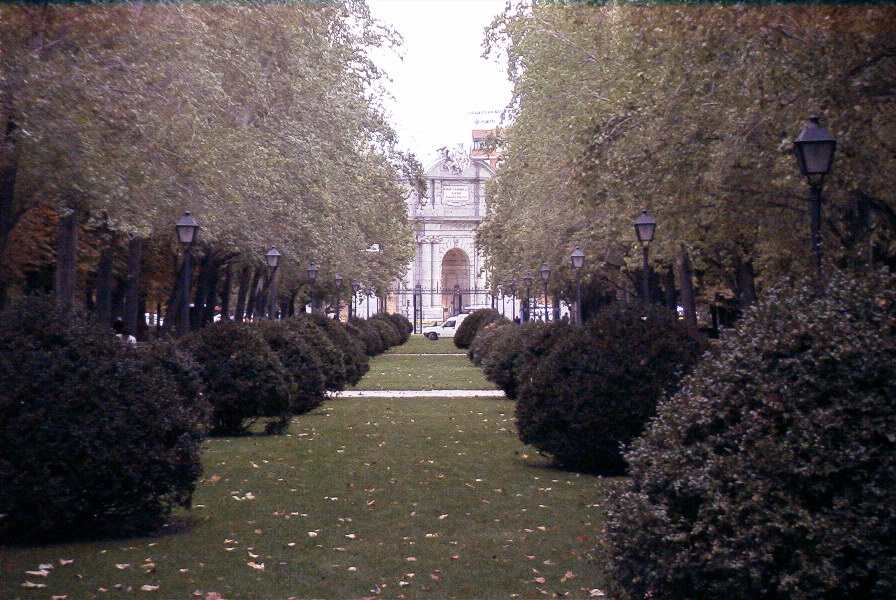
My last afternoon in Madrid was spent at its two premier green spaces: The Botanical Garden and the Retiro Park.
Just to the south of the Prado Museum sits Madrid's Royal Botanical Garden dating back to 1755 although in this 20 acre location only since 1774, still plenty enough time to grow the 10,000 trees here. Like the Prado Museum on its border, the garden was designed by Spain's leading Neoclassical architect Juan de Villanueva:
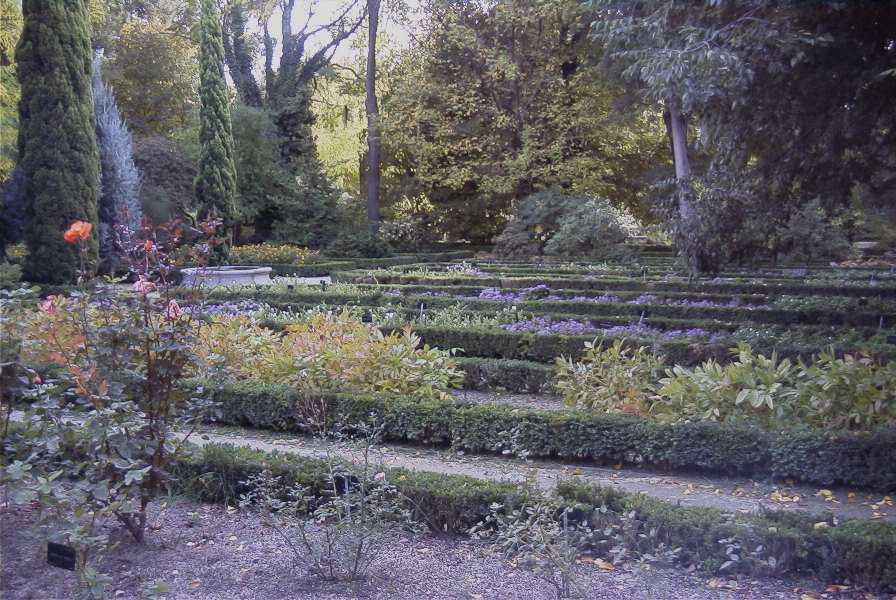
This late in the fall, much of the color was gone; however, there were a lot of purple foliage so in honor of Lady Cindy of Roslyn, I took this picture:
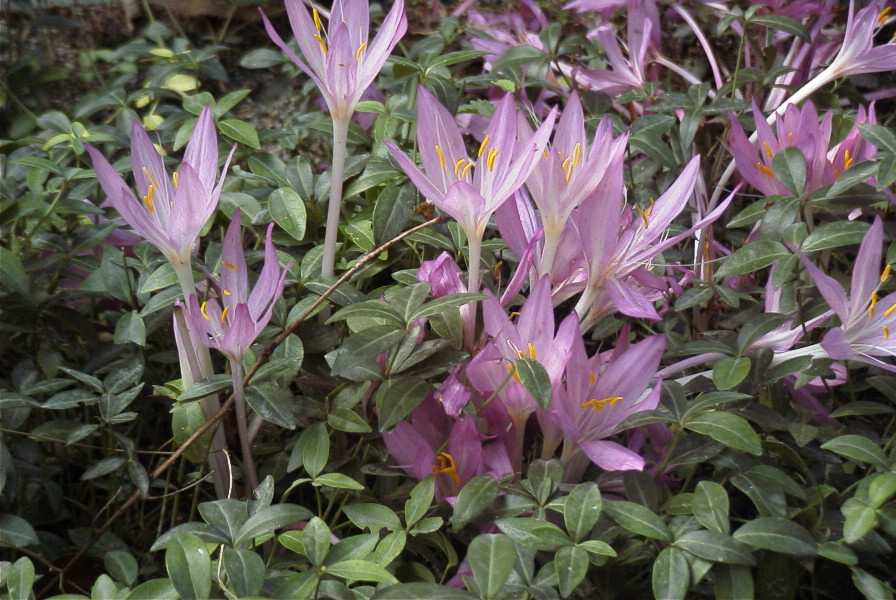
Here's a view through the shrubbery looking at a statue of the garden's founding sponsor, Fernando VI (then again, it may be the king who moved the garden to this location, Carlos III -- hard to tell these relatives at such distance):
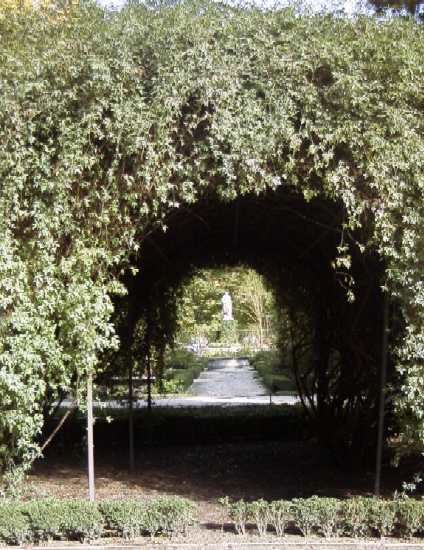
The Garden unfolds in various square plots, symmetrically arranged in three ever-ascending terraces based upon the classification of the then-contemporary Linnaeus (You remember the genus and species guy). Here a typical view of the many wide cement paths which disect these spaces:
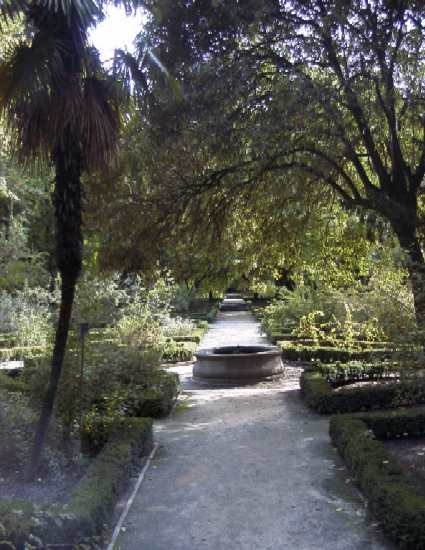
The visitor travels upward until reaching near the back of the garden where this very long arbor ushers him into the Research Building (called the Villanueva Pavilion after the garden's architect):
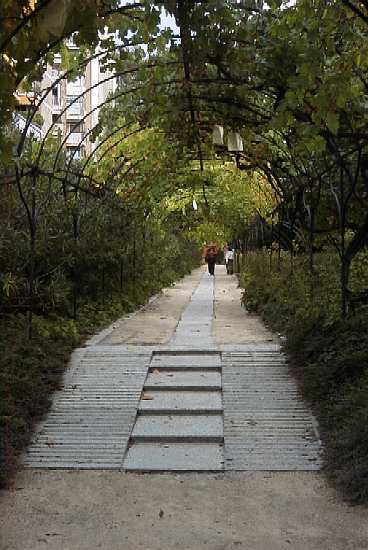
Here's a view of the visitors' center taken overlooking the fountain which was under repair (such are the hazards of a late vacation):
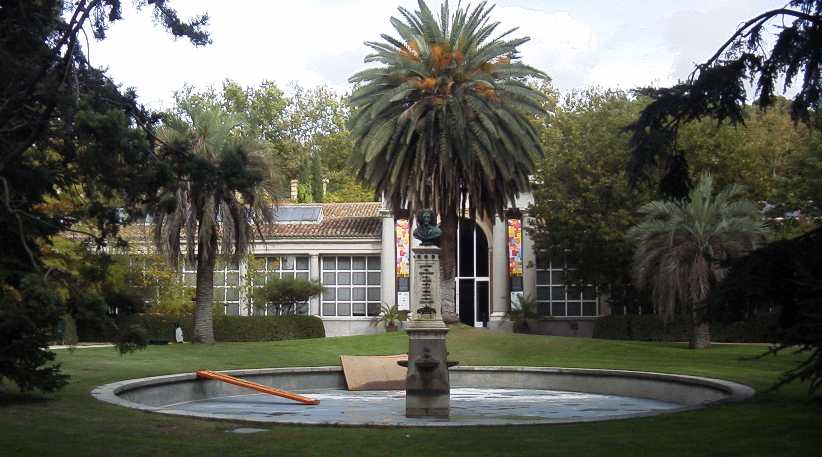
Nearby is a large greenhouse, often containing species from the Americas that were once Spain's territories. This one has a wet side for the tropical rain stuff…
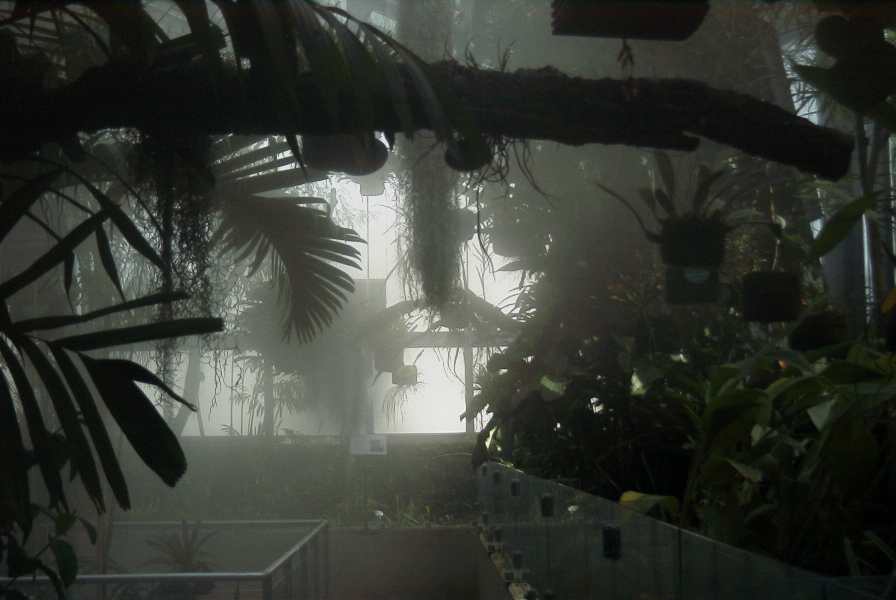
And a dry side for the desert plants:

El Retiro is today a 321-acre park converted from the grounds of a long vanished 17th century palace. (The palace had 30 rooms each for the king and the queen, as if separate bedrooms were not enough!) Its most dramatic entrance is through the Puerta de Alcala, (also shown at the top of this page) a ceremonial arch (now a traffic island) built around the time of the American revolution to honor the entrance of Charles III into Madrid:
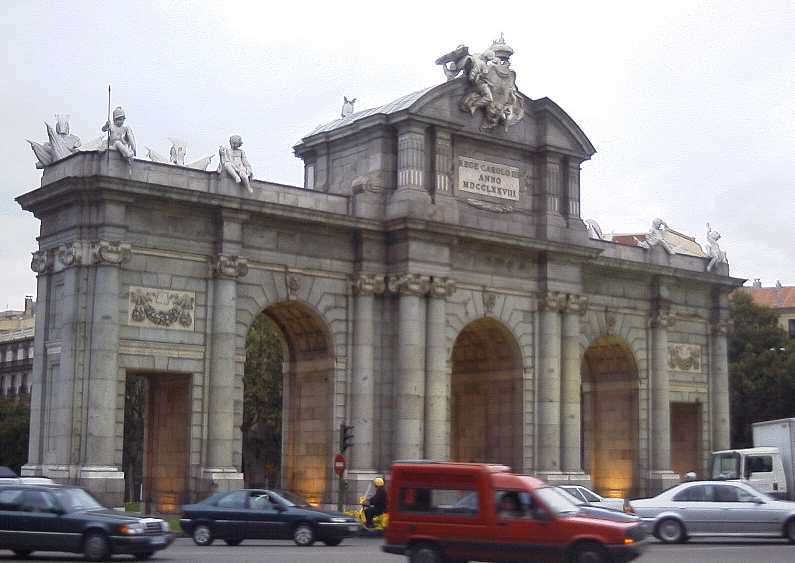
While now in the very heart of Madrid, this arch marked the city wall 200 years ago.
Actually, I approached the Retiro from the other side where Madrid's booksellers line the outer sidewalk of the Retiro, much like their Parisian cousins (called Bouquinistes) along the Seine:

Madrid's booths are much more substantial than the overgrown boxes of Paris. Most of the booths were closed as it was Monday afternoon; however, from what I could see, those open appeared to be selling only books and magazines whereas in Paris you may find nearly everything, but little of value.
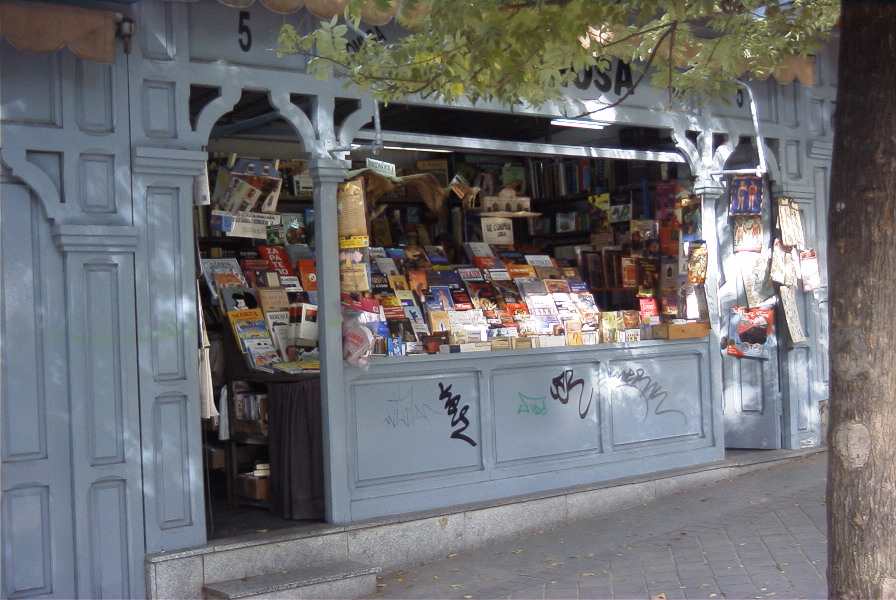
Once inside the park, I went towards the lake -- actually a non-lake as it was being drained for repairs (another of the hazards of off-peak touring). From the fancy fountain, the late October visitor sees this ugly construction fence, not the lake:

All I got to see was the fence until I poked my digital camera through it:
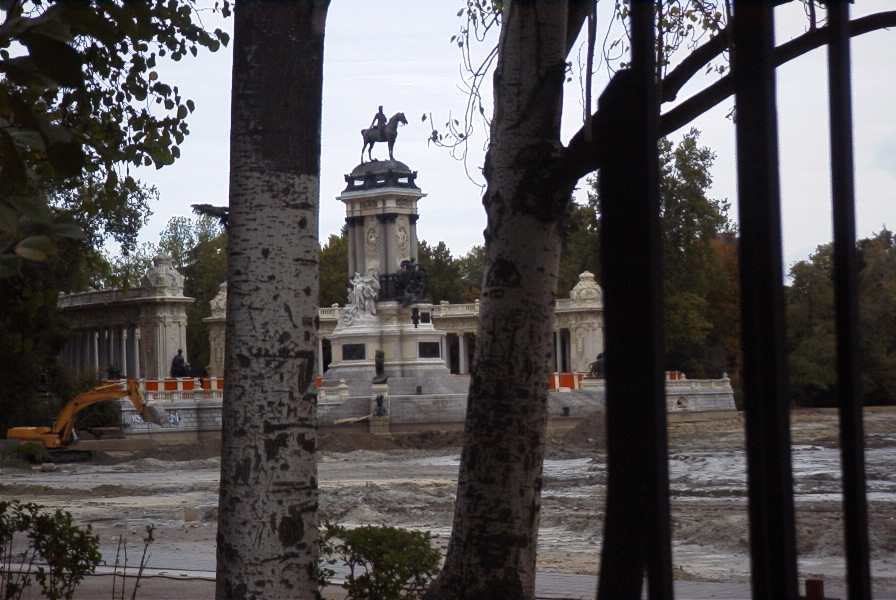
In the background is part of the monument of Alfonso XII built in 1901. Here's a few closer-ups from different angles...
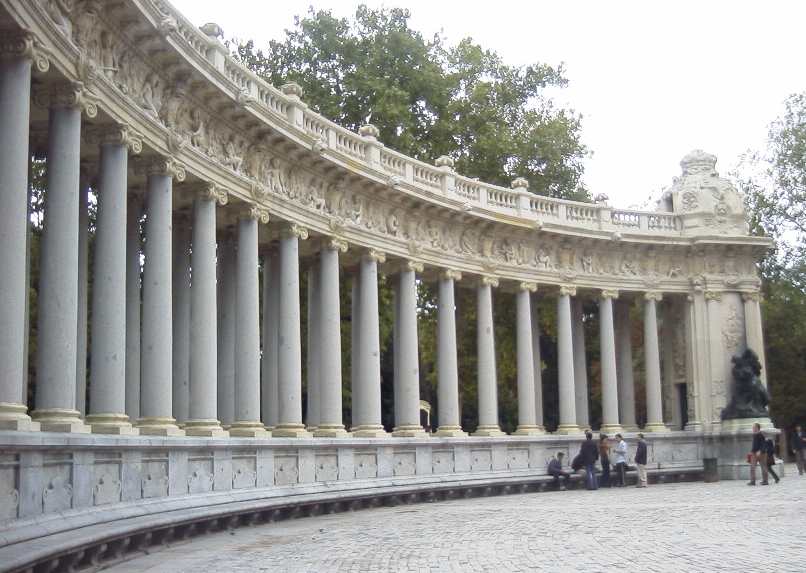
...including a side view of the decoration...
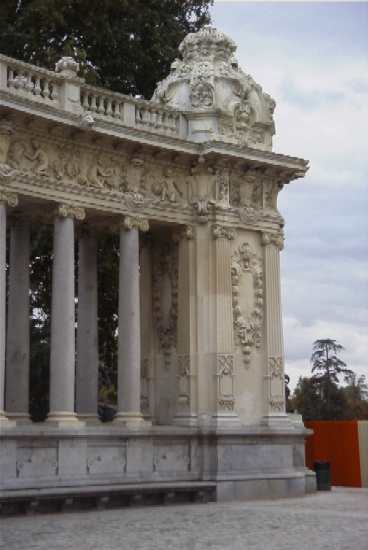
…and from the back:

For a full view of the monument with water in the lake, boaters, etc., click here:
Several buildings can be found in the park including a very few from the original palace. Two of interest are the Crystal Palace and the Palacio de Velazquez, both built by another Velazquez (Ricardo Velazquez Bosco) in the 1880s for various Madrid expositions. The Palacio de Cristal is obviously patterned after the oft-imitated (and long gone) Crystal Palace built in London for the 1851 Great Exhibition. Madrid's was designed to exhibit tropical plants in the Philippines Exposition of 1887. It is still in use today for receptions and exhibitions (but was closed while I was there so all I could get is these pictures of the outside: Here's a close-up of the detail on the outside with, of course, the requisite Spanish variations to add the ceramics: Here's one looking into the high ceilings: Another Park Retiro building is now named after its architect: The Palacio de Velazquez, built as a pavilion for an 1884 exhibition of mining, metal, ceramics. and glass. Here's some of the detail: And here's another shot showing the interplay of the ceramic and brick common throughout all Spain, seemingly forever: That's it for Madrid. The next morning I was off on the high speed train to Seville. I hope to have these pictures posted soon. Thanks for reading!
Where do you want to go today? Here's a few
choices:
Crystal Palace
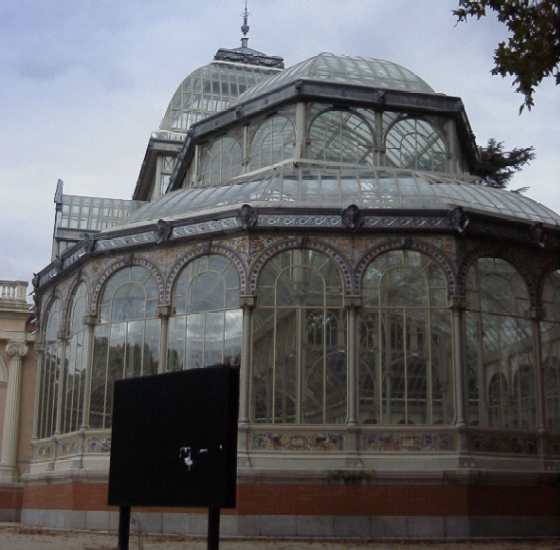
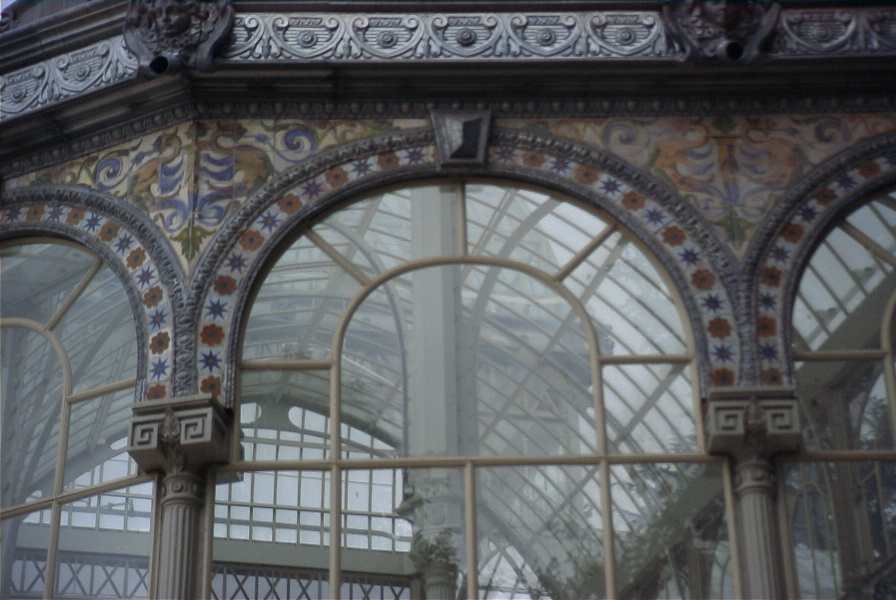
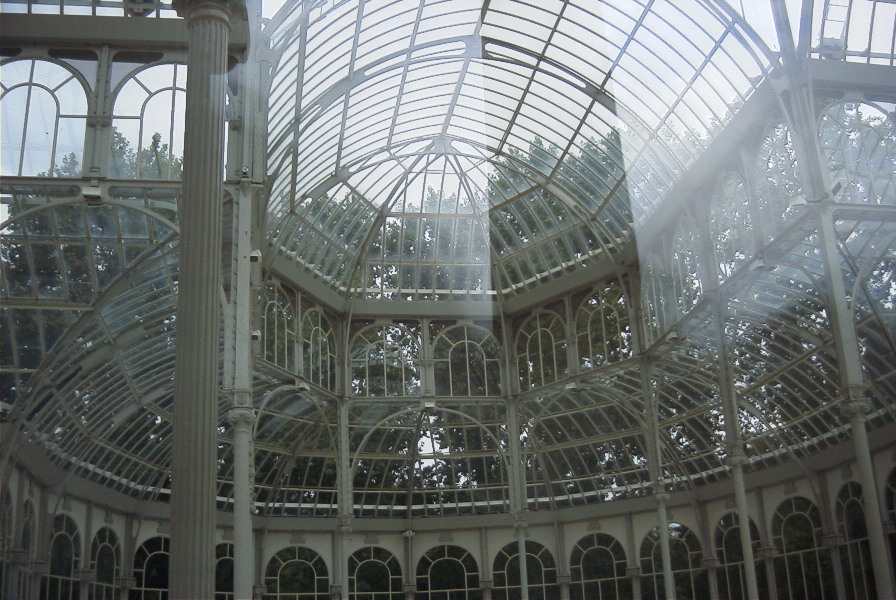
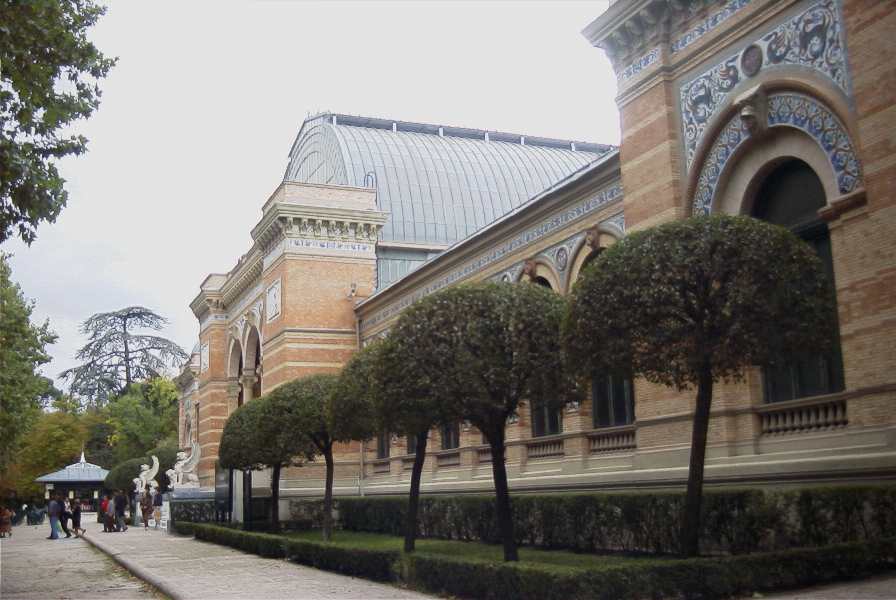
Palacio de Velazquez


Return to the index of the Spain trip:

If you can't figure out your
way out of this mess, search for something else on the Schmitt pages